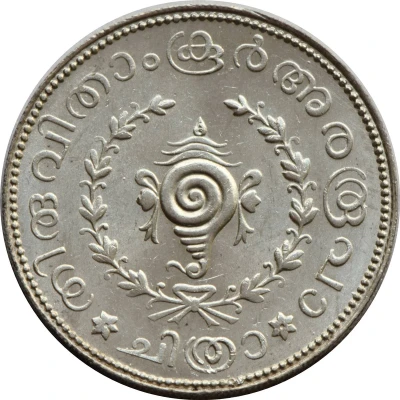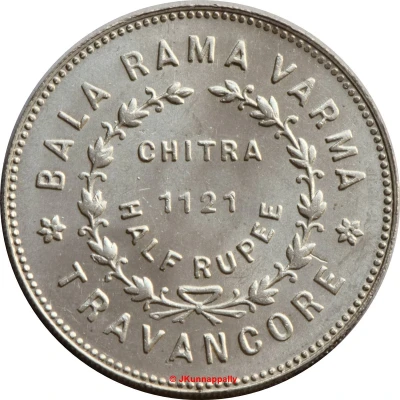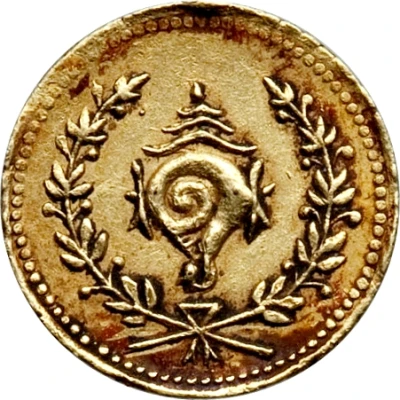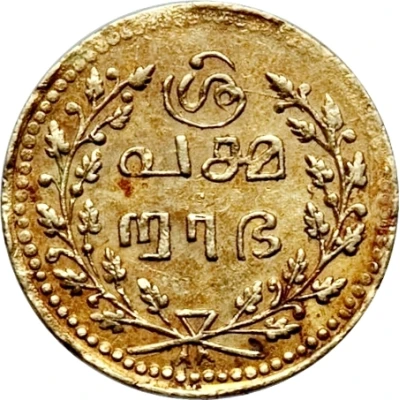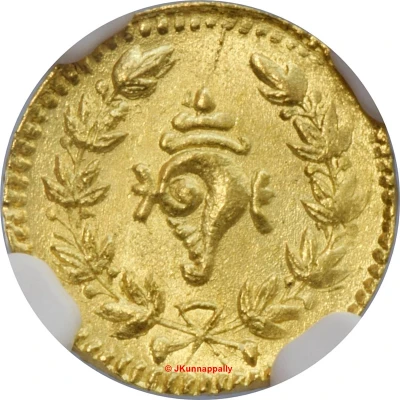
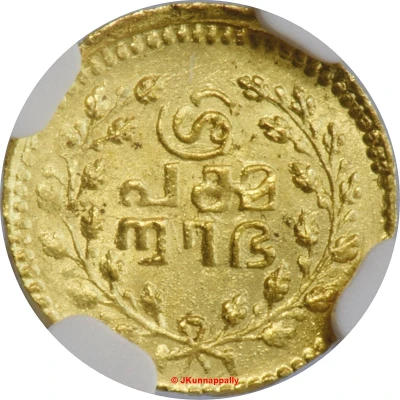

© Joseph Kunnappally
¼ Pagoda ND
| Gold | 0.64 g | 11 mm |
| Issuer | Kingdom of Travancore (Indian Hindu Dynasties) |
|---|---|
| Type | Non-circulating coin |
| Years | 1870-1891 |
| Value | ¼ Pagoda (⅞) |
| Currency | Rupee (1729-1947) |
| Composition | Gold |
| Weight | 0.64 g |
| Diameter | 11 mm |
| Shape | Round |
| Demonetized | Yes |
| Updated | 2024-10-05 |
| Numista | N#64316 |
|---|---|
| Rarity index | 95% |
Reverse
Legend in Malayalam in 3 lines within a wreath, all within a circle of beads
Lettering:
ശ്രി
പത്മ
നാഭ
Translation:
Sri
Pathma
Nabha (Lord Padmanabhan was the family deity of the Travancore Royals)
Edge
Plain
Comment
- Prev. KM#M9- Size varies: 10.9-12.7mm
- Thulabharam is a Hindu ritual where a person is weighed against money, food, fruits or other material and the equal weight donated to a temple or distributed among the poor.
In Travancore, the kings were weighed and their weight in gold coins of various values distributed among Brahmins and their families. The practice was recorded for different kings from 1737 to 1891 . The last king, Chithira Thirunal Bala Rama Varma did not perform this ceremony. The coin displayed above is the design from 1891 during the reign of Moolam Thirunal Rama Varma.
- All Thulabharam coins minted in Travancore till 1870 were uniface after which a new design was adopted with designs on both faces.
- Die varieties exist (click image below)
Interesting fact
One interesting fact about the ¼ Pagoda ND (1870-1891) from Kingdom of Travancore (Indian Hindu Dynasties) made of Gold weighing 0.64 g is that it was minted during the reign of Maharaja Ayilyam Thirunal, who was known for his efforts to modernize the state and promote social reforms. Despite being a non-circulating coin, it is still considered a valuable collector's item among numismatists today.
